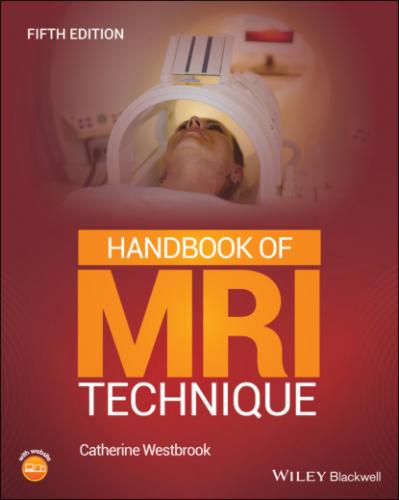Acknowledgements
My heart‐felt thanks to the contributing authors, Anne Bright, Vera Kimbrell, Elizabeth Lorusso, Bac Nguyen and Sara Sullivan, without whom this book could never have been updated. As usual, I am extremely impressed with their professional and thoughtful contributions and I am very grateful for their valued opinions and support.
I would also like to thank Dr John Talbot for his beautifully drawn anatomical diagrams and Christos Tsiotsios from the Ygia Polytechnic Private Hospital, Cyprus for supplying many of the MR images used in this book. A big thank you to Matthew Hayes and Andrea Graziano of ScanLabMR for supplying the new localizer images. This has been a truly international collaboration.
And thank you, finally, to my wife Amabel, my children Adam, Ben and Maddie, my mother Maggie and my sister Francesca. I have no intention of embarrassing you too much, so I will just say, I love you all very much!
Dr Catherine Westbrook
About the Companion Website
The book is accompanied by a website:
www.wiley.com/go/westbrook/mritechnique5e
The website features:
Flashcards
Multiple choice questions
Scan this QR code to visit the companion website.
1 How to Use This Book
Terms and abbreviations used in Part 2
INTRODUCTION
This book has been written with the intention of providing a step‐by‐step explanation of the most common examinations currently carried out using magnetic resonance imaging (MRI). It is divided into two parts.
Part 1 contains reviews or summaries of those theoretical and practical concepts that are frequently discussed in Part 2. These are:
protocol parameters and trade‐offs
pulse sequences
flow phenomena and artefacts
gating and respiratory compensation (RC) techniques
patient care and safety
contrast agents.
These summaries are not intended to be comprehensive but contain only a brief description of definitions and uses. For a more detailed discussion of these and other concepts, the reader is referred to MRI physics books. MRI in Practice by C. Westbrook and J. Talbot (Wiley Blackwell, 2019, fifth edition) is a particularly useful companion to this book.
Part 2 is divided into the following examination areas:
head and neck
spine
chest
abdomen
pelvis
upper limb
lower limb
paediatric imaging.
Each anatomical region is subdivided into separate examinations. For example, the section entitled Head and neck includes explanations on imaging the brain, temporal lobes, pituitary fossa, and so on. Under each examination, the following categories are described:
common indications
basic anatomy
equipment
patient positioning
slice prescription
suggested protocol
protocol optimization
patient considerations
contrast usage.
COMMON INDICATIONS
These are the most usual reasons for scanning each area, although occasionally some rarer indications are included.
BASIC ANATOMY
Simple anatomical diagrams are provided for most examination areas to assist the reader.
EQUIPMENT
This contains a list of the equipment required for each examination and includes coil type, gating leads, bellows and immobilization devices. The correct use of gating and RC is discussed in Part 1 (see Gating and respiratory compensation techniques). The coil types described are the most common currently available. These are as follows.
Volume coils that both transmit and receive radiofrequency (RF) pulses and are specifically called transceivers. Most of these coils are quadrature in design, which means that they generate two RF fields perpendicular to each other. This maximises coupling between the coils and the spin population, thus improving image quality factors such as the signal‐to‐noise ratio (SNR). Volume coils often encompass large areas of anatomy and yield a uniform signal across the whole field of view (FOV). The
